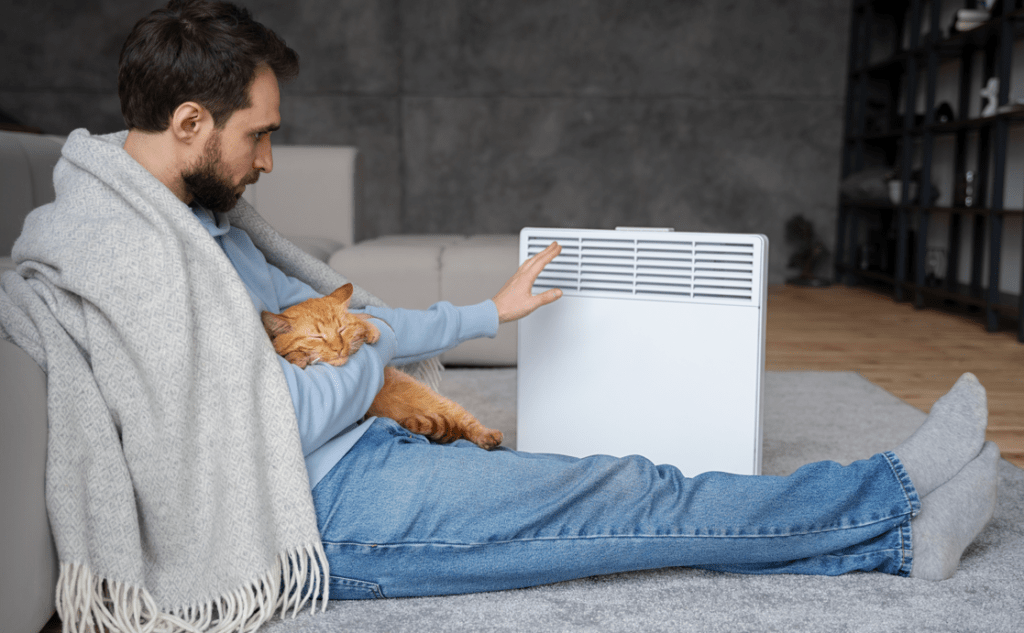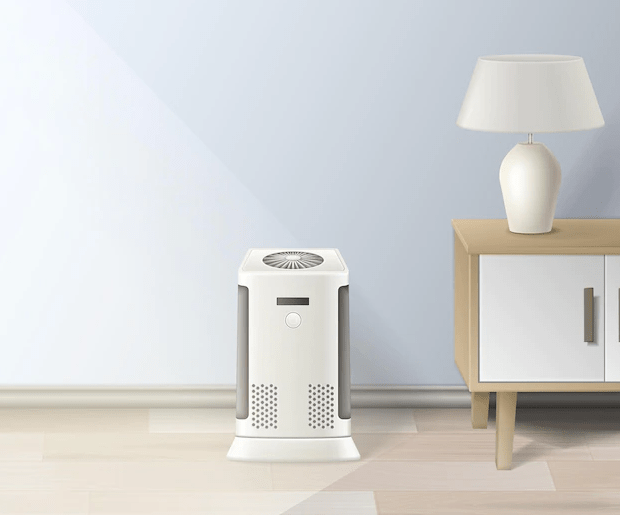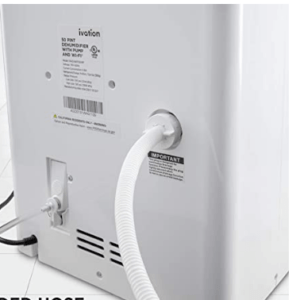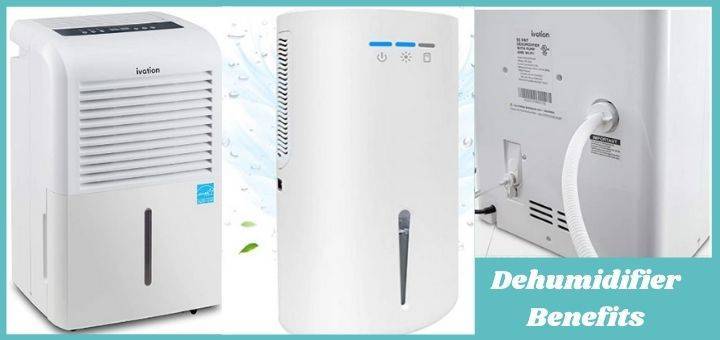Before we delve into how dehumidifiers work, we first have to know what a dehumidifier is. A dehumidifier is an electrical appliance that if there is a presence of moisture in the air, takes that moisture out of the air, for example in your home or even industry, making the air less humid.
It is an appliance that is designed to keep the humidity of a place in check by regulating its amount so that the air is more comfortable. The word “humidity” is the measure of the content of moisture found in the air.
How Dehumidifiers Work

There are two major types of dehumidifiers; there is the desiccant dehumidifier and the refrigerant dehumidifier also known as a compressor. Having that in mind, how does a dehumidifier work? It has a basic principle behind it; it draws excess moisture from the air, to eliminate tangy odor and prevent the growth of mold.
- Refrigerant Dehumidifier
This is the most common dehumidifier being used in most places. If an individual can understand how condensation forms on the outer glass of a cold drink, then understanding how a refrigerant dehumidifier works is quite easy. It works on the same basis but is a little complex. The following are the steps a refrigerant dehumidifier partakes once turned on:
Step 1: It draws in the moist air by a fan and runs it through a certain filter and passes it through cold coils. This causes the moisture in the air to cool on the coils within the appliance. As the air cools, its ability to retain moisture is reduced.
Step 2: This dehumidifier has a collection tank that, traps the condensed droplets which in some of them are removable while in others there is a built-in automatic pump, that enables one to get rid of the water stress-free.
Step 3: The cooled air then passes back through the motor, where it is slightly reheated before it is dissipated into the room.
Step 4: The dehumidifier automatically shuts off once the collection bucket or tank is full so that you do not have to worry about any breakages.
The above steps are a continuous process until a certain percentage of humidity is achieved and that is when the humidifier automatically switches off.
Best Dehumidifier For Bathroom
- Desiccant Dehumidifiers
The following process takes place when a desiccant dehumidifier is turned on:
Step 1: Unlike the refrigerant dehumidifier that uses cold coils, this one uses an absorbent material to extract water from the atmosphere of a room.
Step 2: The absorbent material is then heated so that the moisture collected then falls into a collection tank.
Step 3: The now cooled air is then released back into the room.
Since these types of dehumidifiers are not dependent on the temperature, they can work more effectively compared to refrigerants in any low-temperature conditions.
The only downside to using this dehumidifier over the refrigerant is that it uses more energy since they use heat to get the water from the absorbent material and in return, it gives out more heat than necessary. Which, you may not want if the place is already heated or if it is already warm.
It is safe to say that if you are going to use a dehumidifier in a heated environment, it is good to go with a refrigerant dehumidifier but if you are going to use one in a cold environment, it is advisable to go with the desiccant dehumidifier.
How to Safely Use a Dehumidifier

The following are some of the steps to safely use your dehumidifier:
Step 1: Vacuum the said area before using your dehumidifier, so that it doesn’t send the dust particles around the room. This is actually important if you are suffering from an allergy.
Step 2: Use a cloth to wipe the collection tank, so that you do not get mold from water that is sitting on the floor of the tank.
Step 3: If dirty, you can sometimes clean your filter, where the air passes through, but first you will have to check with the manufacturer’s manual instructions to do so.
Step 4: If your water collection tank does not use a pump to get rid of the water, regularly empty the tank.
Step 5: Always keep the doors and windows closed when you have a dehumidifier running. When they are open, the dehumidifier is working twice as hard to dehumidify the air in the room, because dust and more humid air will keep on filling the room.
Step 6: The dehumidifier should be positioned strategically, in that it should not be near walls or any furniture so that the air can circulate efficiently.
Some of the signs in your living or working space that show that one needs a dehumidifier are as follows:
- There is a persistent damp smell hanging in the environment or where you frequently spend time.
- In your place after rainfall, there is a presence of water leakage.
- Your clothes smell moldy even after doing laundry fresh.
- Persistent signs of a respiratory illness, like coughing or even a running nose.
- You have recently relocated and your allergies are now going over the roof more often than they used to.
- There is an increased presence of unwanted pests, such as spiders or cockroaches.
Buying Guide for a Humidifier

Besides the type of humidity problem, the capacity of the dehumidifier, and the coverage area, there are other features to consider when getting one.
The following is a list of some of the most common features to look for when deciding what dehumidifier to buy and what they mean to you:
- Get one as stated above, with energy star-qualified dehumidifiers.
- Get one with a digital humidistat. This will automatically adjust to maintain the set or required humidity.
- Get one with the internal condensate pump. This helps to push the moisture up and out of the unit appliance by pumping it automatically.
- How big a dehumidifier is depends generally on the amount of moisture to be extracted from the air in 24 hours, which is usually measured in pints. Get a humidifier with a larger capacity model over a smaller one because larger units can dehumidify more area in a shorter amount of time. Moreover, a dehumidifier with a smaller capacity may run continuously and still not lower the humidity to proper levels.
- If you’re looking to move your dehumidifier from room to room, get a unit that is compact, lightweight, and includes a carrying handle or rolling casters.
- If you’d like to be able to adjust different humidity levels, finding a dehumidifier with a humidistat is key. A humidistat automatically sets the unit on/off depending on the humidity setting. This feature will conveniently enable you to turn the unit on/off without having to unplug it, and it also prevents overfilling in case the storage tank is full.
- If you want to use the dehumidifier in temperatures colder than 65° F, get a
unit that has an anti-frost sensor because it can operate in cold temperatures. This feature will help in preventing quick cycling and frost from accumulating on the sensor. - Almost all dehumidifiers have storage tanks for the collected water. In case you don’t need a model with a continuous drainage port, you’ll have to empty the tank often. In case the dehumidifier will be placed in a location where you will not empty it often, then, go for a tank size of at least 15 pints.
- Dehumidifiers that feature a continuous drainage port will eliminate the hassle of emptying a condensation tank. If you need to drain the tank, just attach a hose to the dehumidifier, and the moisture will drain out through the hose.
- Dehumidifiers with inbuilt washable filters trap airborne dust and particles. If your filter is washable, maintaining it becomes a breeze: simply pull out the filter; rinse it with mild soap and water, and replace it within the unit.
Benefits of Dehumidifiers
Some of the benefits of using dehumidifiers are:
- They reduce the amount of dust in your home, in that one does not have to clean as often.
- They reduce irritation to the skin and the respiratory system, as stated above, it reduces dust, making it comfortable to live in your home
- They reduce odors that usually follow hand in hand with mildew and mold in your place.
- They run quietly and efficiently and hence are not disruptive to your daily life routine.
Since they reduce the humidity of a home, this makes it less prone to allergens such as mold and bacteria. - They lower energy costs since it makes your air conditioner run more efficiently and consequentially reduce the wear and tear of the air conditioner.
- Potential side effects of using a dehumidifier
- Dehumidifiers make the air drier, so if one is living in an area where it is less humid or if one uses gas to heat their home, then it is not suitable to have a dehumidifier.
- If the air is made too dry, conditions such as pneumonia may become worse.
- Running a humidifier if one has a dry cough or a stuffy nose is not adequate as it may do more harm than good.
- If your home becomes too dry when using a humidifier, your skin can potentially be affected too, this is especially not ideal for people with eczema because they may be prone to flare-ups.
FAQS
What Is The Ideal Humidity For A Home Or Living Space?
For a home, the ideal humidity is often between 45-50%. An environment with less than 50% humidity can encourage the growth of mold, bacteria, and any other allergens.
Humidity below 30% can just be as damaging since it could potentially lead to an increase in cold and even irritable skin. Thus it is advisable to get a humidifier that has a humidistat. Also, it is very important to place the dehumidifier in the room you need the most.
Another question customers looking to purchase a dehumidifier ask is, where can they buy one of them? It can be bought at almost any home supplier retailer, appliances store, or even department store. It is important to also note that you should only buy a dehumidifier according to the needs you want.
The question in mind that many people will have is the longevity of a dehumidifier. The National Association of Home Builders conducted a study that revealed that the average life of a dehumidifier is close to 8 years on average.
This estimate came about from the data shared by the surveys of manufacturers, trade associations, and researchers.
Overall, the lifespan of any dehumidifier largely depends on how it is used. If one uses a small humidifier for a large space, then most probably it will not last long.
If one uses a dehumidifier all year-round compared to one who uses it often, there will be a difference in their lifespans. One has to keep in mind that routine maintenance is important to extend the lifetime of a dehumidifier.
A dehumidifier is indeed a necessary appliance when one wants to enjoy an even more comfortable environment and as such understanding how they work, and how to properly run and manage one is of great importance.

How Much Does It Cost To Manage Or Operate A Dehumidifier?
This depends on the type of humidifier, the amount of time it takes to run one, and also the electricity rate. On average one should expect to run a humidifier between the costs of 5$ to 30$ on electricity each month.
To conserve money, one should look to purchase a humidifier that is suitable for tackling the amount of humidity in a place.
Purchasing a small dehumidifier in a place with high humidity means that the dehumidifier will be working twice as hard to minimize or maintain the desired humidity of that place.
Also, it is advisable to look for an energy star-rated dehumidifier for running it at a low cost, this means that yes they remove the same amount of moisture from the air, but they use 10 to 20 percent less energy.
- Natural Wood Tables: Rustic & Eco-Friendly Furniture - December 8, 2025
- Enchanting Christmas Garden Designs for a Cozy, Festive Backyard - November 29, 2025
- 35 Best Open Layout Living Room Dining Room Designs - November 29, 2025

